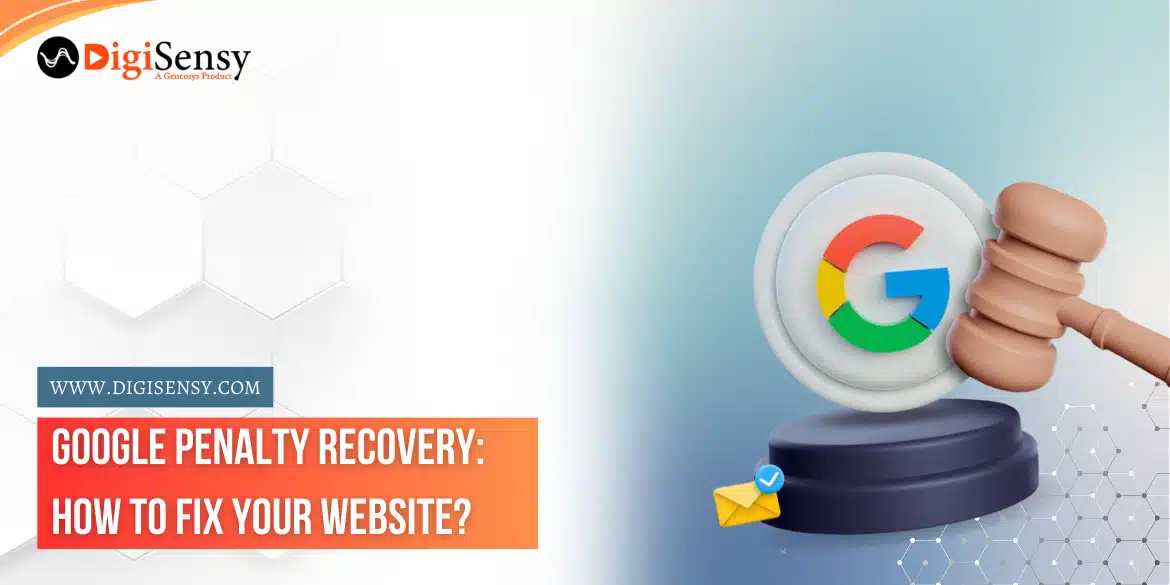Have you been penalized by Google and don’t know what to do next? Google penalty recovery is not a hard process you just need to commit a few steps and you’ll get the right results! Well, you might be wondering why Google does so. The reason behind this is Google reserves the right to apply penalties to websites when the bots find out about the violation of webmaster guidelines. These violations are of two types, these are Algorithmic Penalties and other Manual Action Penalties. Let’s explore what these types are and how you can fix your website.
Manual Action Penalty
It means Google’s web spam team has manually flagged your website and is in direct violation of Google’s guidelines. It has either decreased your website in rankings or banned your website. A manual action is easy to analyze because Google will send you a notification on Webmaster Tools and navigate to the ‘Search Traffic’ drop-down and click on ‘Manual Actions’. Reasons behind manual penalties are thin content, hacked websites, user-generated spam, keyword stuffing, spammy structured markups, unnatural links, and hidden text.
Algorithmic Penalty
It means a change to Google’s algorithm that negatively impacts your website rankings. These penalties can result in degrading your ranking and it may be responsible for loss of organic traffic. It is harder to identify because there will not be a notification from Google. Algorithmic Penalties will be related to the Penguin and Panda Google algorithms.
Understanding How to Fix the Issues on Your Website
As per the SEO Company in Lucknow, most fixes for manual action penalties will be unnatural links that can be fixed by auditing and cleaning up incoming links. Make sure that spammy sites remove links to you and submit a disavow of links that couldn’t be removed. Thin content is also an issue and that should be fixed with more relevant content to your website and by improving website structure.
User-generated spam can be fixed by removing spammy content and replacing it with informative content. Whereas in a hacked website you have to check and remove the hacked pages of your website. If there is spammy structured markup then make sure that you remove those markups and use Google’s rich snippet testing tool to check all of your markups.
Sneaky redirects can be fixed with the ‘fetch as Google’ tool to remove wrong redirects or similar content. To fix Keyword stuffing or hidden text issues you can check your website page source code and remove meta keywords. Rewrite or change the keyword-stuffing technique to enhance your organic traffic and build relationships with consumers.
When you fix these issues then you have to submit the reconsideration request to Google’s web spam team. If the penalty was caused by a mistake of the SEO company or by an employee then provide this information to Google. Make sure that you document all the work or data related to fixing of problem. Create a Google doc to show all of the steps you are taking to clean up your website and link this with your reconsideration request. You have to tell Google that you understand the manual action and ensure your website doesn’t violate any Google guidelines.
To be transparent with your documents and information click on the Manual Actions section of Webmaster Tools and then select the ‘request a review’ option to submit it.
How to Fix the Algorithmic Penalties
These are harder to find and fix because finding the problem with your website will require some heavy detective work so you can take the help of the Top SEO Services Agency. You can make a list of issues that might affect your website’s reach and loss of traffic. Well, two algorithmic penalties affect your website. One is Google Penguin which penalizes manipulative links and Google Panda which penalizes thin and duplicate content.
When you find out that issues are related to Google Panda then you have to clean up your link profile. You will need to remove the wrong redirects, spammy links, and bad link points on your website. After sorting the list of bad links you have to keep track of the domain and then remove the link.
Even after disavowing backlinks, if you see there are still issues related to Panda or on-page optimization then you will need to do an extensive audit of your website. You will need to do a manual review of your website and look for the content that is present on your web pages. You can check plagiarised content, thin content, irrelevant information in content, poorly structured websites, and more.
Conclusion
Well, there is no shortcut to finding a way to fix the Google penalty. Whether your penalty is manual or algorithmic you have to look at all aspects and be patient with the results of solutions. This recovery process may be longer but it can help you improve your site’s reputation. As long as you follow the steps as we described you can recover from any Google penalty and can improve your website ranking.




